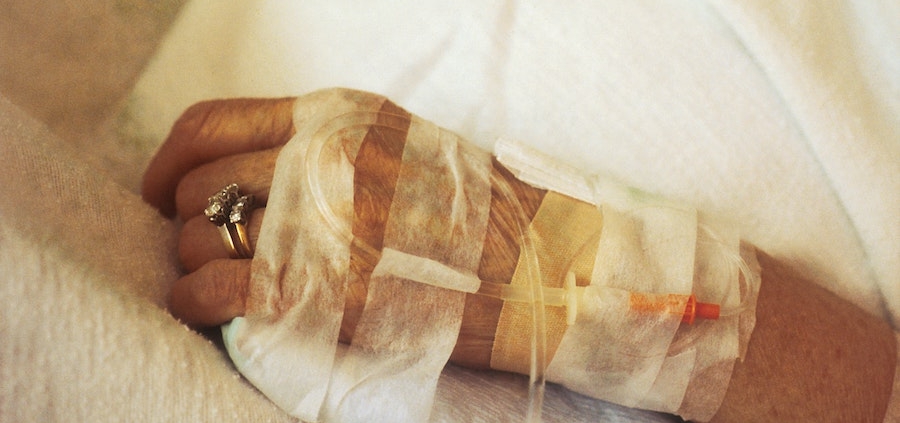The Case for Palliative Care by Anne Kerrigan
Over the past several years, I have read numerous essays concerning euthanasia in different publications—rightly so, because it is a critically important topic. Writers stress the dangers of legal euthanasia proliferating across the world and thus becoming a norm. In the September 2015 issue of Marist Messenger, an Australian expert stated that “Euthanasia is a dangerous radical shift in society’s foundational values.”
Many states and countries have already approved legalized euthanasia. A number of years ago, when Dr. Jack Kevorkian of the United States began participating in physician-assisted suicide (PAS), many people were horrified. Others were saying that it was about time someone was ready to help the terminally ill and dying patients. The controversy raged, and it still does, but now it seems that the legalization of PAS and euthanasia is gaining steam. The increase in requests for euthanasia appears to be a dangerous trend. The recent pandemic has showed us clearly how quickly an end-of-life decision might be foisted upon us.
It is time to again look at the complexities of end-of-life care. We must now consider making concrete suggestions about how to address these issues and the many difficult questions involved. Articles, essays, and books are helpful, but we must become more practical. Not everyone reads the same publications. Where do we go from here? How do we make it a grassroots effort to inform and educate the public?
Unfortunately, most people don’t even contemplate even the possibility of end-of-life decisions until the situation is upon them. This state of affairs presents a real challenge. The main issue is that we as a society do not allow people to die well. I believe that there are better options available for patients and families without implementing PAS or euthanasia. In almost all cases, the goal of treatment is to cure, and our institutions and our medical care are almost always directed to this end. But treatment plans can become aggressive, overlooking the human dimensions and nuances of each particular situation. As Bishop McGann of the diocese of Rockville Centre, New York, has stated, “Sometimes, in our desperate attempt to save our loved ones, we abandon them to too much treatment and technology where they are endlessly subjected to medical interventions over which they have no control.”
Thankfully, the medical profession has been making some moves toward educating patients and families about end-of-life issues. Palliative care, which is focused on providing relief from the symptoms and stress of an illness, is a new area of expertise. Additionally, palliative care often leads a patient to hospice care, which is comfort care at the end of life. This emphasis on relieving symptoms and providing emotional and spiritual support will help to alleviate the requests for euthanasia.
But the medical community cannot do it alone. How do we, as religious communities, help people to think about the specifics of end-of-life decisions? Our parishes and dioceses must accept the challenge of educating people about end-of-life issues. Many parishes already have “Respect Life” committees, but these committees tend to dedicate themselves solely to the abortion issue. I know that this is the case in my parish. In fact, the parish logo for the Respect Life committee is an adult hand holding two tiny feet. How does this allow for the exploration of the spirituality of death and dying?
While I certainly believe that abortion is a critical area of discussion, I also believe that respecting life is not limited to abortion. Cardinal Bernadin once described the life issue as a “seamless garment,” meaning that all aspects of life are critically important. This education can start as a grassroots parish movement which will hopefully expand to neighboring parishes and eventually to the diocese. It would be wonderful if it started at the diocesan level, but it must start someplace. Parishioners, ask your pastor for a committee to address end-of-life issues! If there is already such a committee, make sure it is active, addressing the medical, legal, and spiritual aspects of the dying process.
The demand for euthanasia is a sign that we are failing as a community. We have lost our faith and trust in the words of Christ that promise everlasting life. We are also failing in our commitment to be companions to one another, especially to those who are in the throes of the final journey. If we, as a Catholic Christian community, want to stand against euthanasia, then we have a responsibility to provide the support structures and skills needed to help one another, especially at the end of life. Euthanasia is a death-oriented solution to the problems of how to care for the dying. The challenge to the Catholic Christian community is to show the dying that they have not been abandoned by the human community, the medical community, or by God.
The euthanasia debate is essentially about the nature and the meaning of human life. As such, it calls for spiritual vision. Therefore, I believe that we, as Catholic Christians, must do all we can to empower, educate, and support patients and families within the framework of our rich tradition. Death and dying, with all its human sadness and loss, is but a transition to ultimate union with God. It is total integration rather than disintegration, and we all have a mandate to spread the good news.
Anne Kerrigan is a registered nurse, mother of five, and grandmother of nine. She also has a master’s degree in theology and is the winner of the Australasian Religious Press Association Silver Award in Excellence for “Best Faith Reflection.” She is in the process of writing her memoir. She can be reached at martker@aol.com. A version of this article originally appeared in the Marist Messenger.





Leave a Reply
Want to join the discussion?Feel free to contribute!